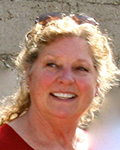Circles of Our Lives
“He drew a circle that shut me out--heretic, rebel, a thing to flout. But love and I had the wit to win: We drew a circle and drew him in!" (Edwin Markham)
 |
| Cary Larson-McKay |
This is a time for drawing circles of celebration, a time of year we often gather together, reflect on our past, express our thanks, and generally draw our circles of friends and family together. Sometimes this means we draw circles that keep people out. However, if we believe that equity and inclusion are essential to the well-being and future of children, and if we wish to inspire those who teach and care for the children we must draw a circle that includes and welcomes all in.
The Diversity Committee is working to draw a very inclusive circle to bring everyone into the work we do.
I would like to share a few thoughts from a book by Guy W. Jones and Sally Moomaw called Lessons from Turtle Island: Native Curriculum in Early Childhood Classrooms. The intent of this book is to help teachers of young children become aware of the past in ways that may have been previously unknown in order to see the strains of the present, and ultimately find a path toward a hoped for future. In diversity work the “crime” of omission is a common gap that is fundamental to the continued societal/cultural dysfunction. This book focuses on Native culture but the truth of what they say is applicable to other cultures and diversities as well.
“Those who work with young children realize that children perceive differences among people much more readily than similarities… Skillful parents and teachers help children look beyond differences to the similarities among peoples.” Finding and comparing those things that are common across cultures is one way Jones and Moomaw recommend approaching inclusion with children. They warn against “…selecting and isolating a particular art tradition, item of apparel, or celebration, (this focus) encourages non-Native children to view Indians as exotic and different, rather than helping children understand similarities among all peoples. Worse yet, they often ask children to reproduce sacred objects, there-by degrading and mocking important cultural and spiritual traditions.” To do this takes considerable communication to bring greater understanding and appreciation of our differences and our similarities.
Let us together draw a circle to draw all in.
Please feel free to contact the Chair of this Diversity Committee:
Cary Larson-McKay | cary_mckay@yahoo.com
